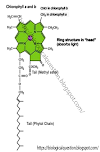Ribosome
Definition :
Ribosome Molecular machine that synthesizes proteins by reading mRNA and linking amino acids in the correct sequence for all living organisms.
Structure of Ribosome :
Ribosomes were first observed using electron microscope as dense granules. Ribosomes are roughly
spherical, granular, non membranous bodies found in both eukaryotic as well as prokaryotic cells.
However, eukaryotic ribosomes are lager and characterized as 80S ribosomes while the prokaryotic
ribosomes are slightly smaller and are characterized as 70S ribosomes. They can be seen only under the
electron microscope.
Chemical Composition of Ribosome :
They are made of almost an equal amount of RNA and protein so they are
ribonucleoprotein. Ribosomes are formed in the nucleolus. Then these are transported to the cytoplasm
through the nuclear pore.
In a eukaryotic cell, the ribosomes may be found as attached with RER or freely dispersed in the
cytoplasm. Ribosomes are also found in matrix of mitochondria and stroma of chloroplast but these
ribosomes are prokaryotic (70S) in nature.
Polysome
The eukaryotic ribosomes are composed of two subunits (particles) of different sizes. The larger one is
60S particles and the smaller one is 40S particles. The two subunits on attachment form 80S particles.
The attachment is controlled by presence of magnesium ions concentration or forming salt bonds
between phosphate group of RNA and amino group of amino acid or both by magnesium ions and salt
bonds.
Function of Ribosome :
The main function of ribosomes is to synthesize proteins. Ribosomes read the genetic information encoded in messenger RNA (mRNA) and use that information to assemble amino acids into a polypeptide chain according to the genetic code. The genetic code is a set of rules that specifies the correspondence between the sequence of nucleotide triplets in the mRNA and the sequence of amino acids in the protein.
Ribosomes consist of two subunits, the larger subunit and the smaller subunit. The mRNA molecule passes through a channel in the ribosome, and the ribosome uses its RNA molecules and associated proteins to catalyze the formation of peptide bonds between the amino acids. The ribosome also moves along the mRNA molecule, reading the genetic information and adding amino acids to the growing polypeptide chain as it goes.
Ribosomes are found in all living cells, from bacteria to eukaryotes, and are responsible for synthesizing the vast majority of proteins in the cell. Proteins are essential for virtually all biological processes, including metabolism, cell signaling, and the maintenance of cell structure and function.
Defects in ribosome function have been implicated in a range of diseases, including genetic disorders such as cystic fibrosis, developmental disorders such as Down syndrome, and cancers such as leukemia. Understanding the structure and function of ribosomes is therefore of great importance for both basic research and the development of new therapies for a variety of diseases.
Thank you for Reading the article.



.png)

.png)
0 Comments